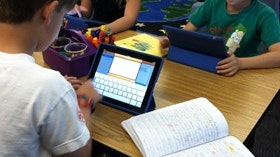Homepage
•
Learning Library
•
Blog
•
6 elements of a successful iPad implementation
Expand breadcrumbs
Expand breadcrumbs
- Learning Library
- Blog
- 6 elements of a successful iPad implementation
- Homepage
- •
- Learning Library
- •
- Blog
- •
- 6 elements of a successful iPad implementation
6 elements of a successful iPad implementation
By Samantha Messier
November 17, 2014








